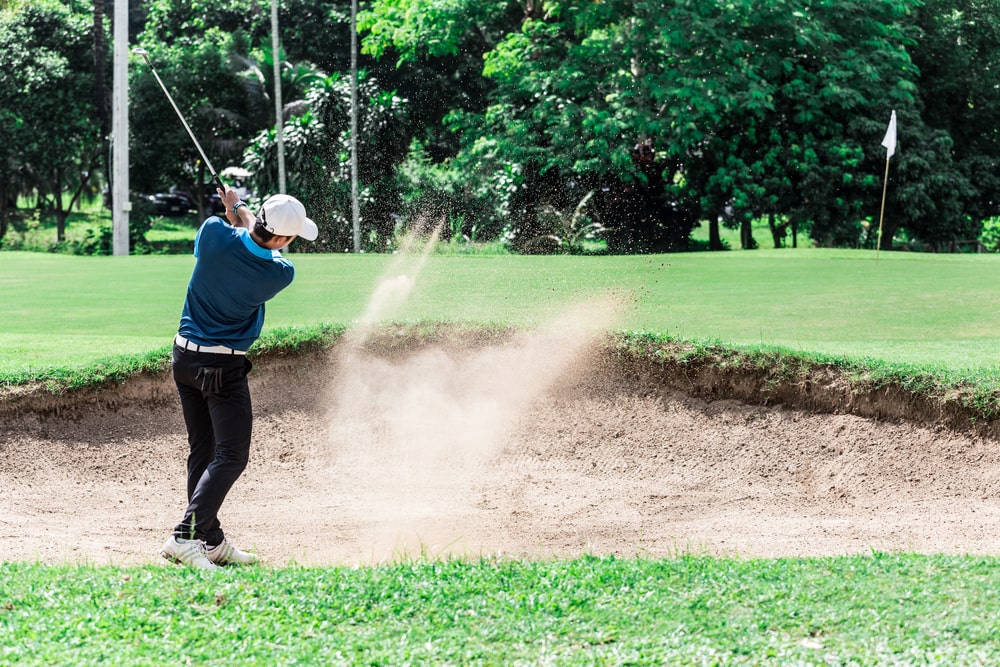Mastering bunker shots can be the difference between a great round of golf and a frustrating day on the course. Many golfers dread the sight of a sand bunker, but with the right techniques, you can confidently escape any tricky situation.
Whether you’re dealing with a steep lip, buried lie, or a long carry to the green, learning how to execute the perfect bunker shot is essential. In this article, we’ll explore practical strategies and expert tips to help you navigate any golf sand bunker with confidence.
Understanding the Basics of Bunker Shots
A bunker shot is a golf stroke made from a sand-filled hazard on the course, commonly known as a sand bunker. The objective is to lift the ball out of the sand and onto the green with control and accuracy. This shot requires a different technique compared to regular swings due to the interaction between the club and the sand.
But what exactly makes a bunker shot so challenging?
- Sand Dynamics: Unlike regular shots on grass, the club must interact with the sand before striking the ball, which can affect both distance and direction. Understanding how sand resistance impacts the club’s movement is key to controlling the shot.
- Different Lies: The ball can be buried, on a slope, or sitting cleanly on top of the sand. Each scenario requires a different approach, demanding adaptability and quick decision-making.
- Mental Pressure: Bunker shots often come with the added pressure of avoiding embarrassment or high scores. This mental barrier can lead to hesitancy and poor execution.
Master the basic bunker shot to improve your short game. By practicing proper technique and knowing how to read sand conditions, you’ll be better equipped to handle any situation that arises in a golf sand bunker, ultimately boosting your confidence and performance.
Best Techniques for Hitting Any Sand Bunker Shot
Hitting a great bunker shot isn’t about sheer power but rather a delicate mix of finesse and precision. Master specific techniques to navigate any sand bunker situation. Here are considerations and tips to best help you conquer the hazards:
Open Your Stance and Clubface
Position your feet slightly open to the target line and open the clubface. This setup allows you to use the bounce of the club and prevent it from digging too deep into the sand. It also helps to create a softer landing, giving you better control over the ball’s distance and direction.
Ball Position and Weight Distribution
Place the ball slightly forward in your stance, with about 60% of your weight on your front foot. This helps create a steeper angle of attack and ensures you strike the sand before the ball. Maintaining this balance throughout the swing leads to more consistent and accurate shots.
Aim Behind the Ball
Focus on hitting the sand approximately two inches behind the ball. This will lift the ball out of the golf sand bunker with a high, soft landing. Practice this technique to build confidence and help you judge distances more accurately.
Accelerate Through the Shot
Maintain a steady tempo and accelerate through the shot. Decelerating can cause the club to dig too much or result in a thin, bladed shot. By accelerating smoothly, you ensure a clean exit from the sand, preventing the club from getting stuck.
Control Your Follow-Through
A full follow-through ensures that the club maintains speed through the sand, helping the ball pop out effortlessly. Avoid stopping your swing abruptly, as this can reduce power and accuracy. Practice fluid, continuous motions for better shot consistency.
Practice Different Lies
Not all bunker shots are the same. Practice from uphill, downhill, and buried lies to build confidence and adaptability. By simulating these scenarios, you’ll be prepared for any situation on the course.
Visualize the Shot
Before executing the basic bunker shot, visualize the trajectory and landing spot. This mental rehearsal boosts confidence and enhances focus. Visualization helps you commit to the shot, reducing anxiety and hesitation.
Use the Right Club
Choose a wedge with the appropriate loft and bounce for the specific situation. Experimenting with different clubs during practice helps identify your go-to option. Knowing when to use a sand wedge versus a lob wedge enhances your strategic play.
Mastering Bunker Shots Through Practice
The key to mastering these techniques is consistent practice. However, not all practice facilities provide the right environment. This is where OGP in Hong Kong offers a unique advantage for golfers looking to perfect their short game.
Unlike synthetic alternatives, OGP uses a real sand indoor bunker to replicate authentic course conditions. Our innovative 2-tier green design allows golfers to practice various bunker scenarios, from straightforward shots to more complex situations. This exceptional feature makes it the perfect place to practice your bunker shot skills.
Practicing on a golf sand bunker like the one at OGP enhances your ability to handle real-world challenges on the course. By simulating different lies and sand conditions, you can fine-tune your technique and gain the confidence needed to conquer any bunker.
Located conveniently in Causeway Bay, we offer unmatched accessibility for busy golfers. Whether you’re looking to practice before work or during a lunch break, you can sharpen your skills without leaving the city at OGP.
Take Control of Your Bunker Shots with Confidence
Mastering bunker shots is essential for improving your short game and lowering your scores. By understanding the basics and practicing the best bunker tips, you can transform your approach to the sand bunker and gain a competitive edge.
Learn Sand Bunker Shot Techniques at OGP
If you’re unsure about your technique or struggling with consistency, consider taking bunker lessons at OGP. Our experienced instructors provide personalized guidance to help you master the fundamentals of bunker shots.
With expert coaching and state-of-the-art facilities, you can build confidence and improve your short game. No matter your skill level, our tailored lessons will help you develop effective techniques and achieve better results on the course.
Contact OGP in Hong Kong and experience our real sand indoor bunker. With authentic conditions and an innovative 2-tier green design, we provide the perfect setting to practice and perfect your bunker shot techniques. Don’t let bunkers intimidate you—conquer them with confidence at OGP!

